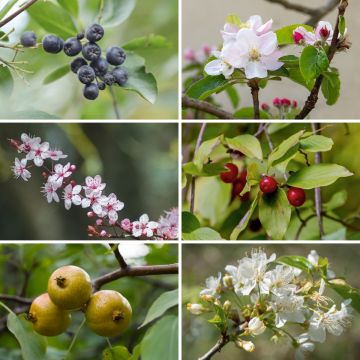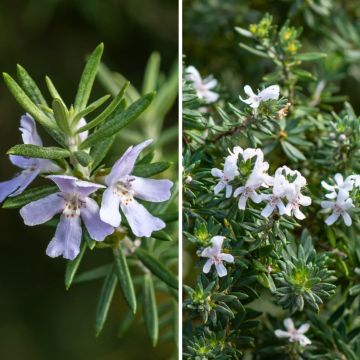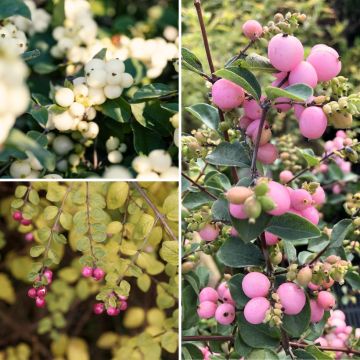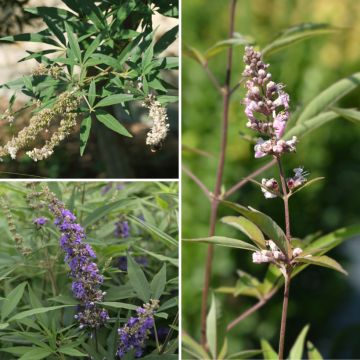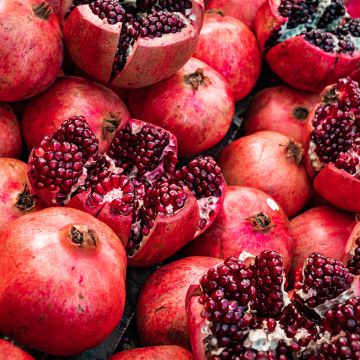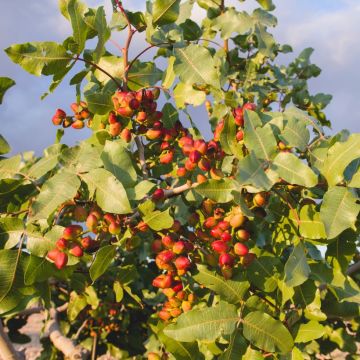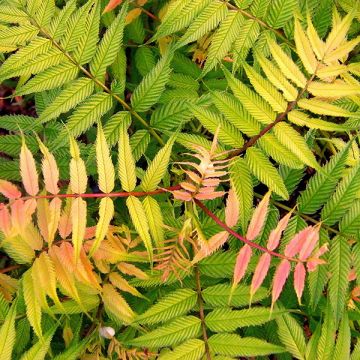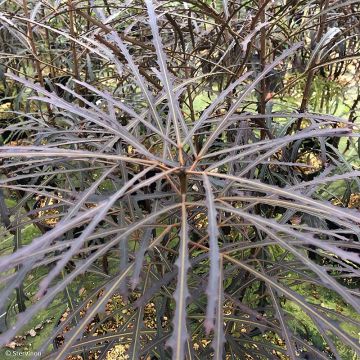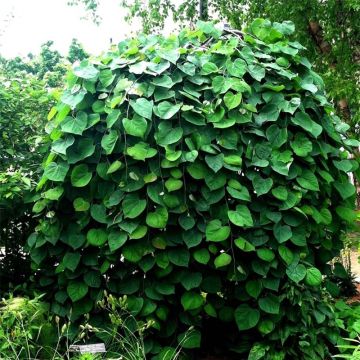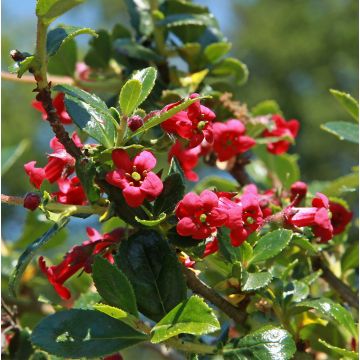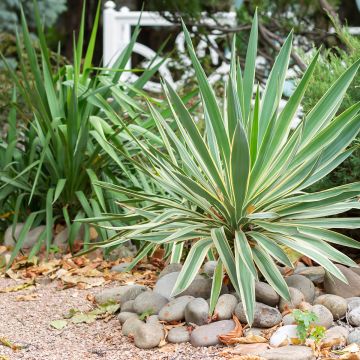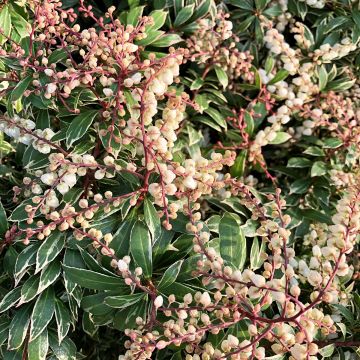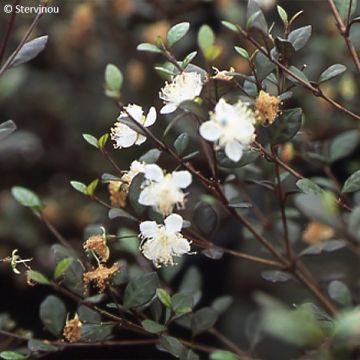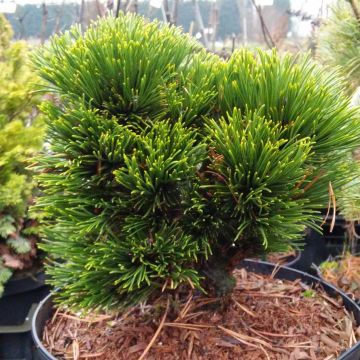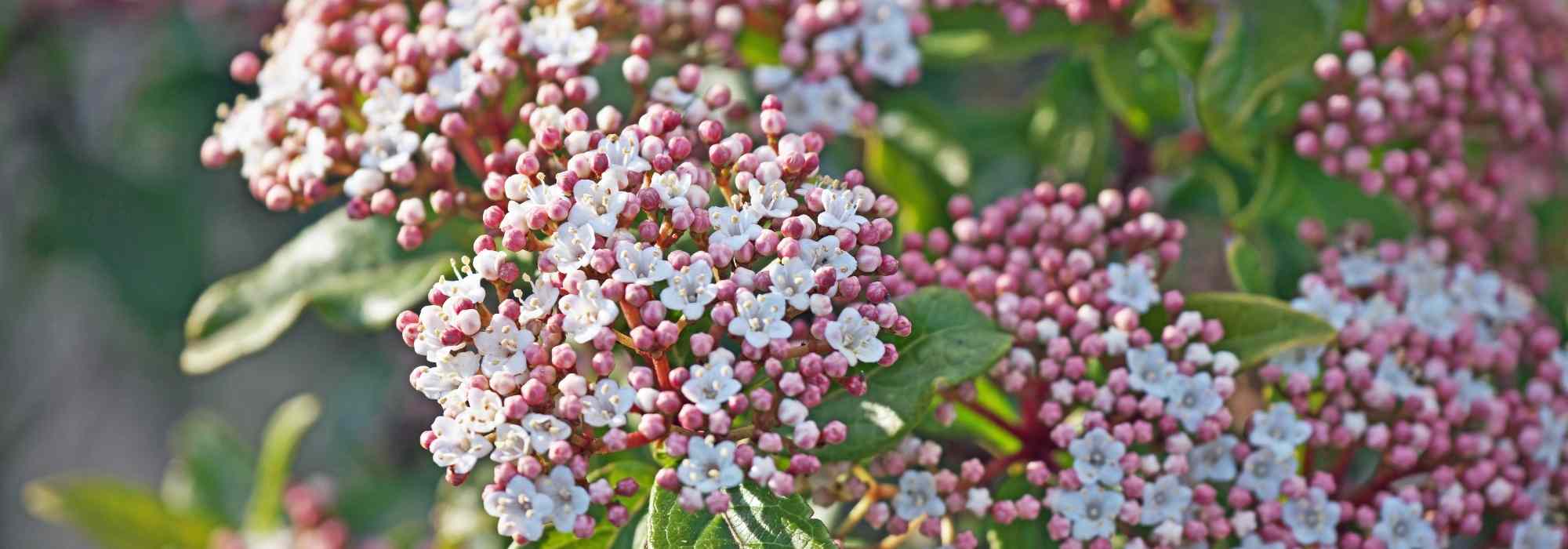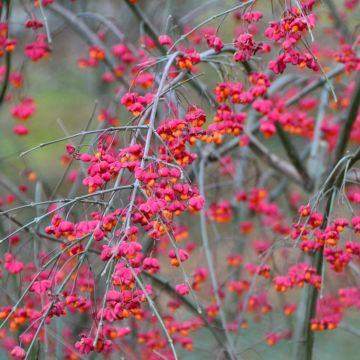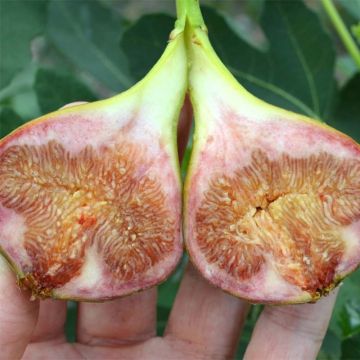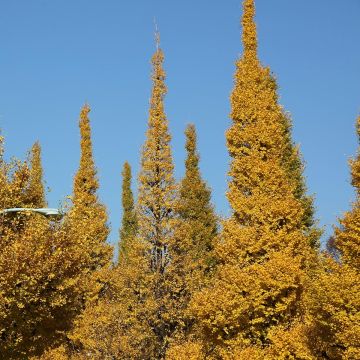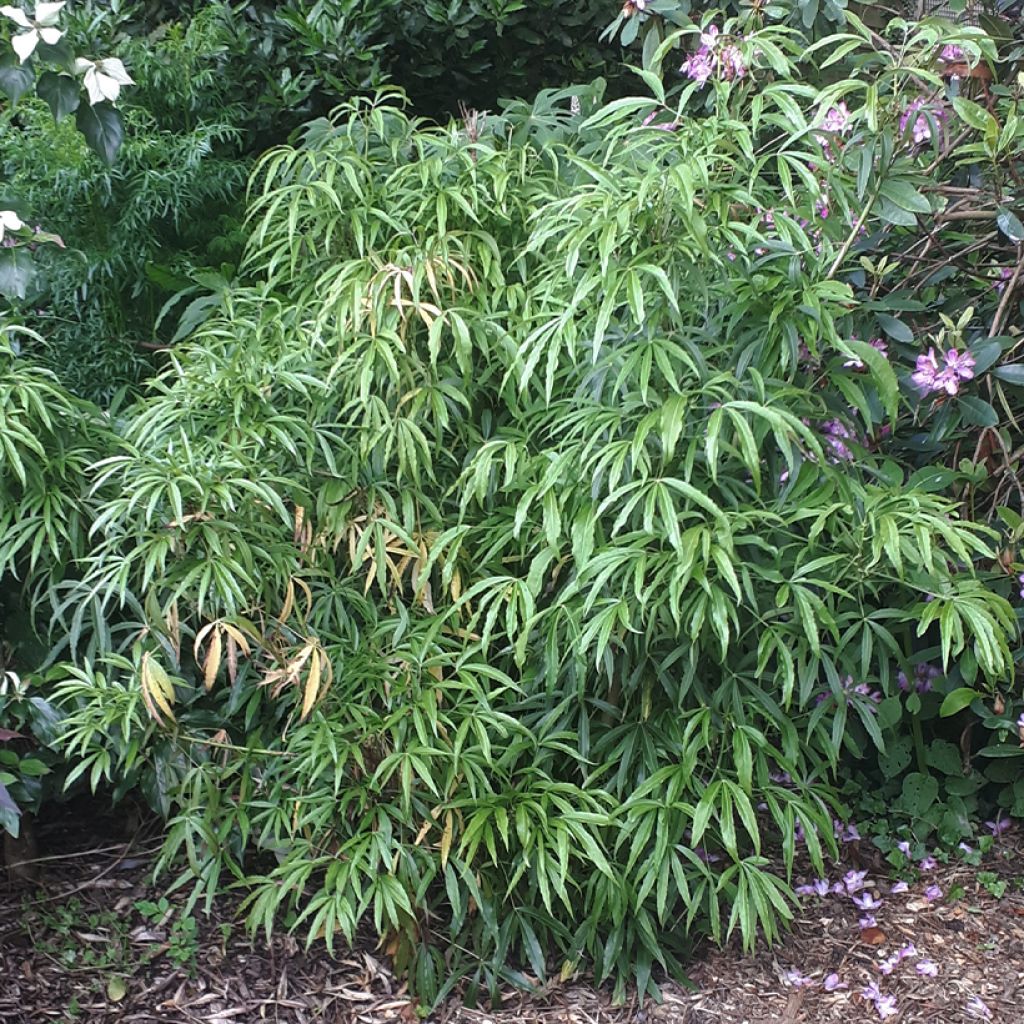

Metapanax davidii - Palm Leaved Aralia
Metapanax davidii - Palm Leaved Aralia
Metapanax davidii
Palm Leaved Aralia
Special offer!
Receive a €20 voucher for any order over €90 (excluding delivery costs, credit notes, and plastic-free options)!
1- Add your favorite plants to your cart.
2- Once you have reached €90, confirm your order (you can even choose the delivery date!).
3- As soon as your order is shipped, you will receive an email containing your voucher code, valid for 3 months (90 days).
Your voucher is unique and can only be used once, for any order with a minimum value of €20, excluding delivery costs.
Can be combined with other current offers, non-divisible and non-refundable.
Why not try an alternative variety in stock?
View all →This plant carries a 24 months recovery warranty
More information
We guarantee the quality of our plants for a full growing cycle, and will replace at our expense any plant that fails to recover under normal climatic and planting conditions.
Would this plant suit my garden?
Set up your Plantfit profile →
Description
Metapanax davidii is a cousin of Ivy and Japanese Aralias, but much less known than these common plants. It is relatively hardy, excellent for adding a touch of exoticism to a flower bed. Its dark green evergreen foliage is decorative all year round, and surprising with its varied leaf shapes. When mature, it blooms in summer with large white panicles, which then develop into small black fruits. Preferring partial shade, it grows quite slowly in most moist, well-draining soils, reaching a height of about 3m.
Metapanax belongs to the family of Araliaceae, which includes many genera with decorative foliage. The "panax" group is particularly distinguished by its leaf blades: compound in Acanthopanax sieboldii, palmate and imposing in Oplopanax horridus, the record is held by Tetrapanax papyrifera 'Rex' with leaves as large as umbrellas! As for Panax, it is a well-known perennial commonly known as ginseng... We could also mention Oreopanax, which resembles the famous Schefflera, another member of the Araliaceae family, as these different plants share a family resemblance.
Metapanax, on the other hand, is native to eastern Asia, with a wide natural habitat range from northern China to southern Vietnam. Thriving in humid climates, it grows up to altitudes of 3000m in the subtropical Yunnan province. It can develop as a shrub or as a small tree reaching about ten metres in height. In our climates, it usually reaches a height of 2.50m or 3m with a spread of 1.80m to 2m. It is slow-growing and gradually forms a dense shrub, with an irregular habit in its early years that evolves into a more or less dome-shaped habit over time, reminiscent of some tree-like Ivies, from the same family.
With its dark green evergreen foliage, Metapanax is highly ornamental. Interestingly, several types of leaves coexist on the same plant. Some are simple, elongated, and toothed on the edges, carried by a long flexible petiole that gives flexibility to the foliage. Others are trilobed, with the central lobe longer than the two lobes on each side. Some are even completely palmate, with three or more leaflets. The petioles are arranged 360° around the stem, giving the plant a very distinctive and bushy appearance. Mature plants flower in July-August, producing long panicles measuring 15 to 20cm, composed of numerous slightly fragrant white flowers that stand out against the glossy foliage. They then develop into small, decorative black fruits.
Except in the most severe climates, this Metapanax will allow all tropical plant lovers to create a little corner of paradise in their garden. This shrub can be associated with other plants that evoke distant lands. You can plant Hedychium densiflorum Assam Orange with it, a surprising ornamental ginger with large green leaves and long spikes of orange flowers that have a fiercely exotic look. Belonging to the same family as Metapanax but much more widespread, Fatsia japonica always makes an impression with its large palmate leaves. Schefflera taiwaniana is another "tropical" type of shrub with its large palmate leaves and umbrella-shaped habit. And to really push the tropical vibe, nothing beats a hardy banana tree like Musa basjoo Sakhalin with its huge sturdy leaves.
Report an error about the product description
Plant habit
Flowering
Foliage
Botanical data
Metapanax
davidii
Araliaceae
Palm Leaved Aralia
East Asia
Other Shrubs A to Z
View all →Planting and care
Metapanax is hardy to about -15°C. It requires a semi-shaded location, especially in hot regions, as it does not tolerate atmospheric or soil drought. Plant in autumn in mild climates, or in spring elsewhere, in any non-drying garden soil, nevertheless well-drained, especially in winter. Dig a hole 50 cm wide and deep, and mix planting compost with the existing soil. If the soil already retains a lot of water, improve drainage by placing coarse gravel or even rocks at the bottom. Soak the root ball in a bucket of water for fifteen minutes before planting, place it in the ground, backfill, and water generously. Monitor watering for the first two years, and then during hot periods. As its growth is relatively slow, pruning this plant is unnecessary.
Planting period
Intended location
Care
Planting & care advice
This item has not been reviewed yet - be the first to leave a review about it.
Similar products
Haven't found what you were looking for?
Hardiness is the lowest winter temperature a plant can endure without suffering serious damage or even dying. However, hardiness is affected by location (a sheltered area, such as a patio), protection (winter cover) and soil type (hardiness is improved by well-drained soil).

Photo Sharing Terms & Conditions
In order to encourage gardeners to interact and share their experiences, Promesse de fleurs offers various media enabling content to be uploaded onto its Site - in particular via the ‘Photo sharing’ module.
The User agrees to refrain from:
- Posting any content that is illegal, prejudicial, insulting, racist, inciteful to hatred, revisionist, contrary to public decency, that infringes on privacy or on the privacy rights of third parties, in particular the publicity rights of persons and goods, intellectual property rights, or the right to privacy.
- Submitting content on behalf of a third party;
- Impersonate the identity of a third party and/or publish any personal information about a third party;
In general, the User undertakes to refrain from any unethical behaviour.
All Content (in particular text, comments, files, images, photos, videos, creative works, etc.), which may be subject to property or intellectual property rights, image or other private rights, shall remain the property of the User, subject to the limited rights granted by the terms of the licence granted by Promesse de fleurs as stated below. Users are at liberty to publish or not to publish such Content on the Site, notably via the ‘Photo Sharing’ facility, and accept that this Content shall be made public and freely accessible, notably on the Internet.
Users further acknowledge, undertake to have ,and guarantee that they hold all necessary rights and permissions to publish such material on the Site, in particular with regard to the legislation in force pertaining to any privacy, property, intellectual property, image, or contractual rights, or rights of any other nature. By publishing such Content on the Site, Users acknowledge accepting full liability as publishers of the Content within the meaning of the law, and grant Promesse de fleurs, free of charge, an inclusive, worldwide licence for the said Content for the entire duration of its publication, including all reproduction, representation, up/downloading, displaying, performing, transmission, and storage rights.
Users also grant permission for their name to be linked to the Content and accept that this link may not always be made available.
By engaging in posting material, Users consent to their Content becoming automatically accessible on the Internet, in particular on other sites and/or blogs and/or web pages of the Promesse de fleurs site, including in particular social pages and the Promesse de fleurs catalogue.
Users may secure the removal of entrusted content free of charge by issuing a simple request via our contact form.
The flowering period indicated on our website applies to countries and regions located in USDA zone 8 (France, the United Kingdom, Ireland, the Netherlands, etc.)
It will vary according to where you live:
- In zones 9 to 10 (Italy, Spain, Greece, etc.), flowering will occur about 2 to 4 weeks earlier.
- In zones 6 to 7 (Germany, Poland, Slovenia, and lower mountainous regions), flowering will be delayed by 2 to 3 weeks.
- In zone 5 (Central Europe, Scandinavia), blooming will be delayed by 3 to 5 weeks.
In temperate climates, pruning of spring-flowering shrubs (forsythia, spireas, etc.) should be done just after flowering.
Pruning of summer-flowering shrubs (Indian Lilac, Perovskia, etc.) can be done in winter or spring.
In cold regions as well as with frost-sensitive plants, avoid pruning too early when severe frosts may still occur.
The planting period indicated on our website applies to countries and regions located in USDA zone 8 (France, United Kingdom, Ireland, Netherlands).
It will vary according to where you live:
- In Mediterranean zones (Marseille, Madrid, Milan, etc.), autumn and winter are the best planting periods.
- In continental zones (Strasbourg, Munich, Vienna, etc.), delay planting by 2 to 3 weeks in spring and bring it forward by 2 to 4 weeks in autumn.
- In mountainous regions (the Alps, Pyrenees, Carpathians, etc.), it is best to plant in late spring (May-June) or late summer (August-September).
The harvesting period indicated on our website applies to countries and regions in USDA zone 8 (France, England, Ireland, the Netherlands).
In colder areas (Scandinavia, Poland, Austria...) fruit and vegetable harvests are likely to be delayed by 3-4 weeks.
In warmer areas (Italy, Spain, Greece, etc.), harvesting will probably take place earlier, depending on weather conditions.
The sowing periods indicated on our website apply to countries and regions within USDA Zone 8 (France, UK, Ireland, Netherlands).
In colder areas (Scandinavia, Poland, Austria...), delay any outdoor sowing by 3-4 weeks, or sow under glass.
In warmer climes (Italy, Spain, Greece, etc.), bring outdoor sowing forward by a few weeks.































